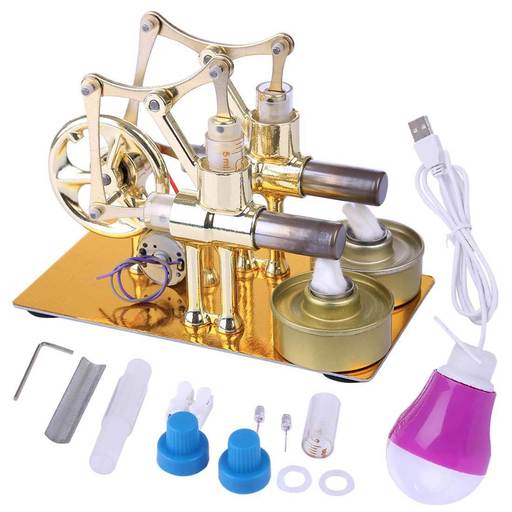Stirling Engine Benefits That You Need to Know Now
The Stirling Engine enhancement process started with the purpose of developing a robust alternative to the conventional steam engines because of certain advantages it had shown over the latter during the initial test run Stirling Engine Project.
Robert Stirling who served as a clergyman and engineer
was the inventor of Sterling engines and got his invention duly patented to his
name in the year 1816. Nowadays, Stirling engines have gained immense
popularity because of their high fuel efficiency and also for being relatively
quiet when operational- a quality which has led to their extensive use in the
complex submarine machinery.
There are many other benefits associated with the
Sterling Engines, let us have a closer look at these as under.
1. Low maintenance
cost: The Stirling Engine is an external combustion engine, which means that an
exchanger is used for transmitting the heat to the working fluid. Since there
is no direct connection between the mechanical parts of the machinery and the
gas fuel, it reduces the chances of wear and tears to the bare minimum; this further
removes the requirement of continual lubrication thus bringing down the
maintenance cost.
2. Minimal
noise: Quite opposite to the internal combustion engines, Stirling Engine project
construction is pretty simple: there are no valves and there is also no activity
involving constant explosions to generate power.
Besides the vibrations generated internally are also
much easier to control. All this leads to comparatively quieter operations when
compared with the internal combustion engines.
The Swedish Navy has built noise-free Stirling engine
powered submarines that can also stay underwater for a much longer duration
than the other diesel-electric vessels.
3. Better
performance: Stirling engines are the best amongst all the thermal
engine options available. They are the only ones to have clocked the
theoretical maximum also referred to as Carnot performance.
4. Fuel
flexibility: Stirling engines are highly fuel versatile. You could
easily operate them with any of the heat-producing sources like burning coal,
boiling water, gas, liquid fuels, burning wood, nuclear power, or even solar
energy. There are large scale solar farms in Arizona which generate power using
Stirling engines.
5. Better
response to low temperatures: Stirling engines have also fared better than the
internal combustion engines under colder environments as the latter requires
greater time to warm up and start functioning.
To know more about the Stirling Engine project for construction, visit us
now at Stirlingkit.com.




Comments
Post a Comment